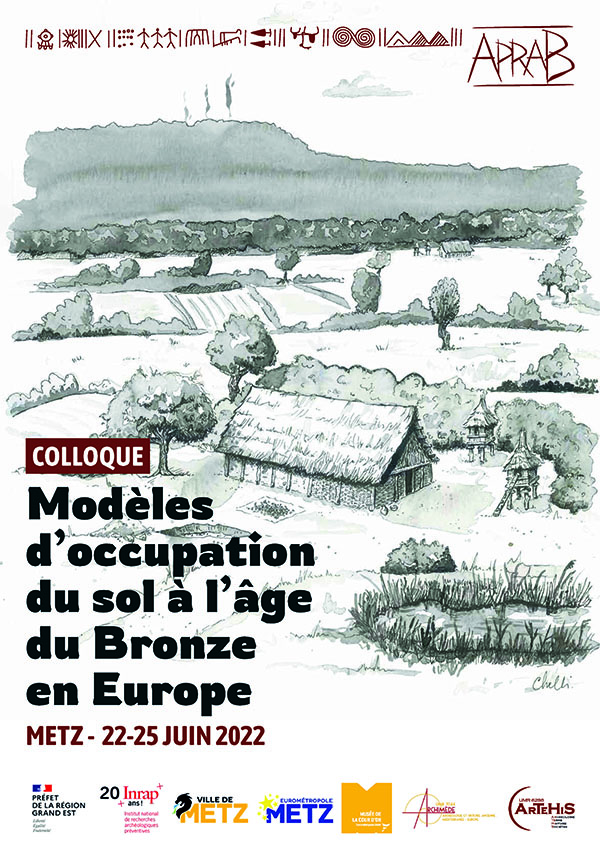
More than 30 years ago, the Lons-le Saunier conference (1990), "Settlement and land use in Bronze Age Europe", focused its attention on the structure of settlements from the isolated farm to the village, from the "Lorraine model" of the itinerant farm that moved every few years around a given area to denser settlements with grouped dwellings. The conference proceedings also ventured into more theoretical domains such as Thiessen's polygons.
Today the idea of a Bronze Age landscape broken up into numerous farmsteads with rare centres of power, this 'exclusive' reality of a dispersed agricultural landscape is no longer in keeping with the social functioning of populations that are believed to be much more mobile than what was envisaged a few decades ago. Indeed, the exchange of raw materials, products, knowledge and technical innovations involves numerous interpersonal contacts.
For the 2022 Metz conference, we will incorporate all human factors that illustrate any type of control over the natural environment and that may in fact reveal systems of exploitation and recurrent methods of land occupation by Bronze Age communities.
We aim to focus on all types of settlement, both on the plains and on hilltops, in coastal and wetland areas, but also cultivated field systems as well as all possible indicators of human impact on the landscape. These include the organisation and spatial distribution of burial grounds, of isolated finds and metal hoards and indicators of geographical mobility such as paths, tracks and fords.
Although certain situations and specific examples can illustrate this question of land use during the Bronze Age, overviews using significant datasets will be a priority with the objective of proposing new economic and social modals for the Bronze Age landscape.
Preventive archaeology has produced an abundant if what geographically uneven set of data, which can however form the basis of statistical and synthetic methods of analysis that have only recently been developed. The operational constraints of preventive archaeology underlies the importance of a territorial approach for which the large river valleys and densely populated areas provide an abundant data; local and regional overviews will therefore be a priority for the conference.
It will however be necessary to support large-scale studies that can correct these geographical blanket effects using predictive hypotheses and proposals provided by GIS-related technologies.
Examples of rock art, which scholars have interpreted as maps, some of which date to the Bronze Age may also be touched on.
Archaeologists, bioarchaeologists, geomorphologists or paleoenvironmentalists who currently work on land use during the Bronze Age within a vast geographical area that includes France, but more broadly Western Europe, from the Nordic world to the Mediterranean, are all welcome to submit a paper.

